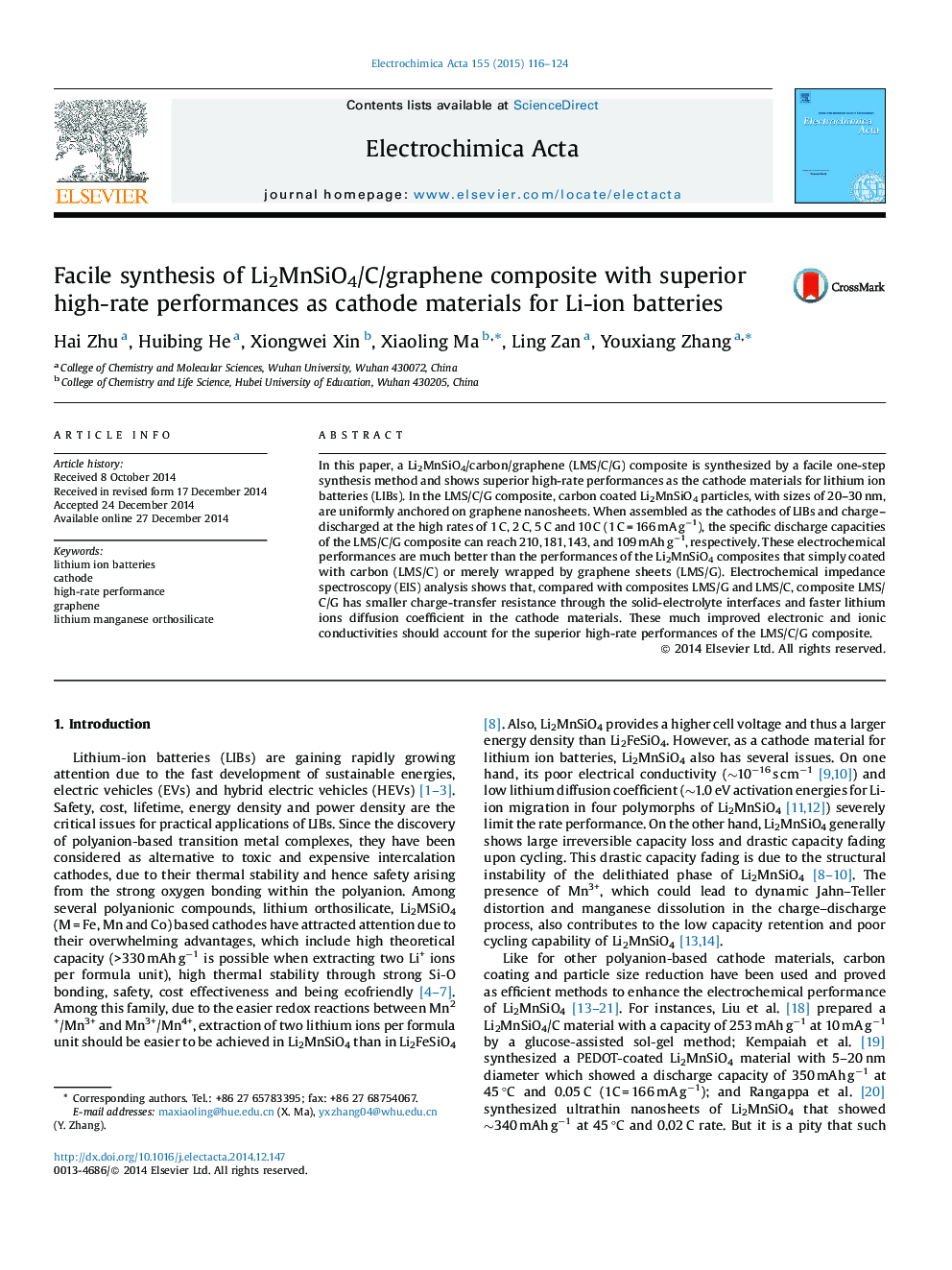| Article ID | Journal | Published Year | Pages | File Type |
|---|---|---|---|---|
| 184556 | Electrochimica Acta | 2015 | 9 Pages |
•A Li2MnSiO4/carbon/graphene composite was synthesized by a facile one-step method.•Li2MnSiO4/C/G composite showed superior high-rate performances as cathode for LIBs.•Discharge capacities of 271 mAh g−1 can be reached at the charge–discharge rate of 0.1 C.•Discharge capacities of 109 mAh g−1 can be reached at the charge–discharge rate of 10 C.•Charge-transfer resistance and Li-ions diffusion coefficient were calculated.
In this paper, a Li2MnSiO4/carbon/graphene (LMS/C/G) composite is synthesized by a facile one-step synthesis method and shows superior high-rate performances as the cathode materials for lithium ion batteries (LIBs). In the LMS/C/G composite, carbon coated Li2MnSiO4 particles, with sizes of 20–30 nm, are uniformly anchored on graphene nanosheets. When assembled as the cathodes of LIBs and charge–discharged at the high rates of 1 C, 2 C, 5 C and 10 C (1 C = 166 mA g−1), the specific discharge capacities of the LMS/C/G composite can reach 210, 181, 143, and 109 mAh g−1, respectively. These electrochemical performances are much better than the performances of the Li2MnSiO4 composites that simply coated with carbon (LMS/C) or merely wrapped by graphene sheets (LMS/G). Electrochemical impedance spectroscopy (EIS) analysis shows that, compared with composites LMS/G and LMS/C, composite LMS/C/G has smaller charge-transfer resistance through the solid-electrolyte interfaces and faster lithium ions diffusion coefficient in the cathode materials. These much improved electronic and ionic conductivities should account for the superior high-rate performances of the LMS/C/G composite.
Graphical abstractFigure optionsDownload full-size imageDownload as PowerPoint slide
